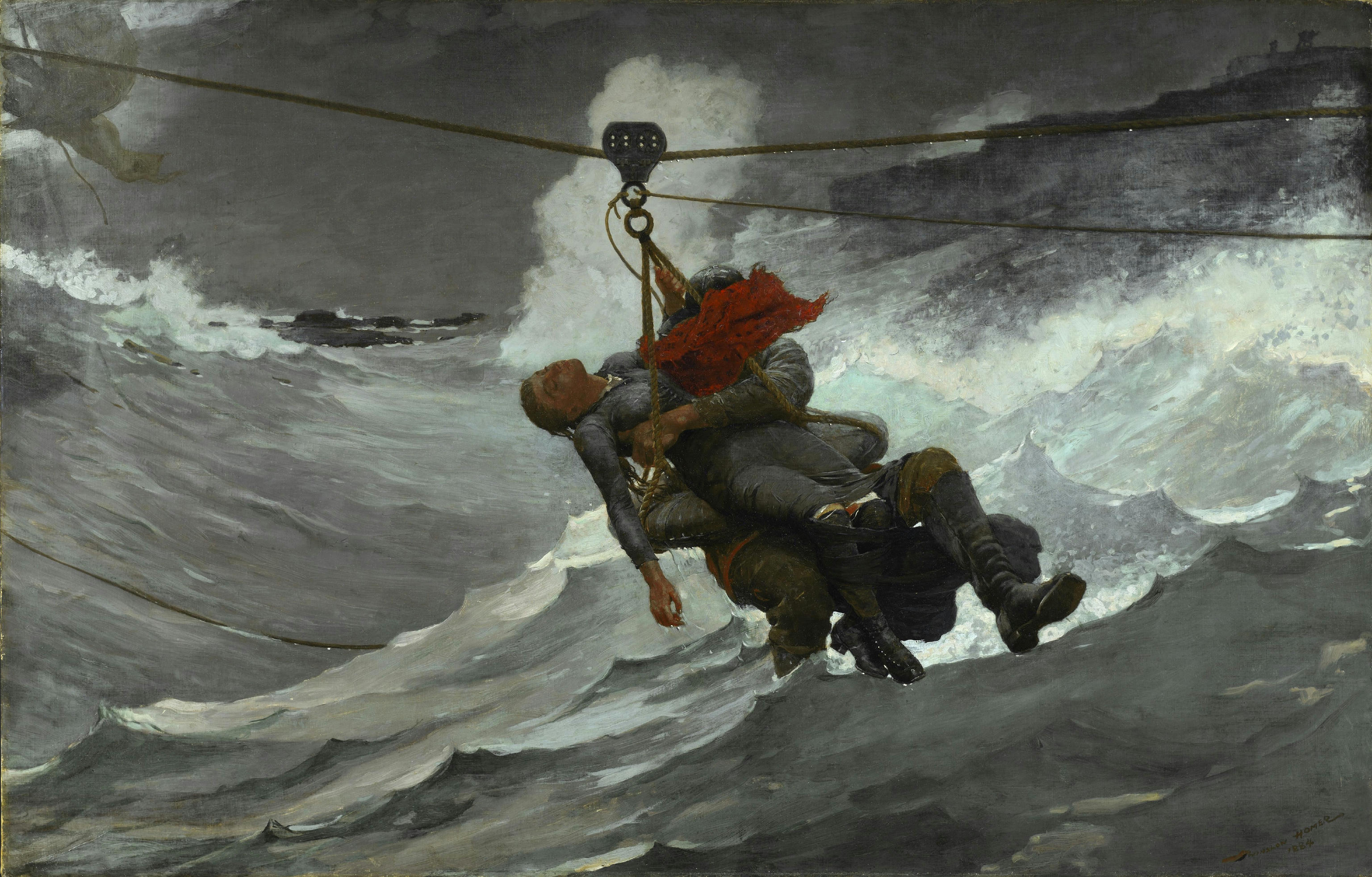The Life Line is a late 19th-century painting by American artist Winslow Homer (1836-1910).
Done in oil on canvas, the painting depicts the rescue of a passenger from a stricken ship.
The work - one of Homer's most iconic - is in the collection of the Philadelphia Museum of Art.
From: Philadelphia Museum of Art
The dramatic rescue from a foundering ship shown here was made possible by a recent innovation in lifesaving technology, the breeches buoy.
Secured firmly to ship and shore, the device permitted the transfer of stranded passengers to safety by means of a pulley that was hauled back and forth by crews at either end.








